Sunday 3 May 2009
Subspecies of Starlings
Anyway, on the way back from work today I saw a starling by the edge of the path, and I decided to look it up when I got back home. To my surprise I found that the common starling (Sturnus vulgaris) has no less than twleve valid subspecies. The one I had seen on the way home was Sturnus vulgaris vulgaris which is found over most of Europe.
I noticed that there is also a unique subspecies on the Faroe Islands. The Faroe Islands have several unique subspecies, which I should talk about at more length at some point.
The Shetland Islands also have their own subspecies, Sturnus vulgaris zetlandicus. The Shetland Islands are home to several interesting species which I should mention in a post at some point, but these include the St Kilda house mouse, and the Orkney Vole.
The other nine subspecies are spread across Europe and Asia, and I don’t really have that much to say about them, but there is a reasonably informative wikipedia article for those who are interested, http://en.wikipedia.org/wiki/European_Starling
See you later.
Saturday 2 May 2009
Scarborough Castle Butterflies
 Large White. Photo courtesy of me.
Large White. Photo courtesy of me. Close-up of a Large White. Photo courtesy of SJV.
Close-up of a Large White. Photo courtesy of SJV. 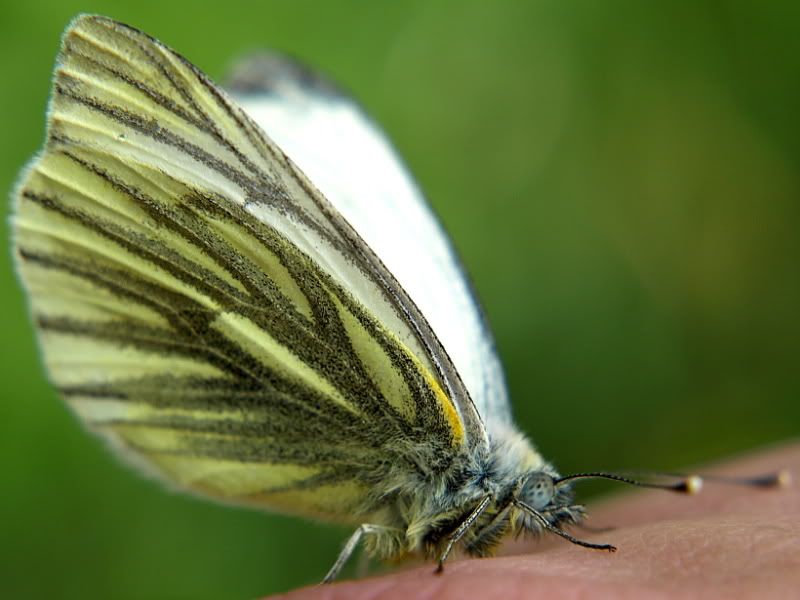
Green-veined White. Photo courtesy of SJV.
It didn't take us too long to see some of the other butterflies common at this time of year, small tortoiseshells abounded, as did small whites and speckled woods.
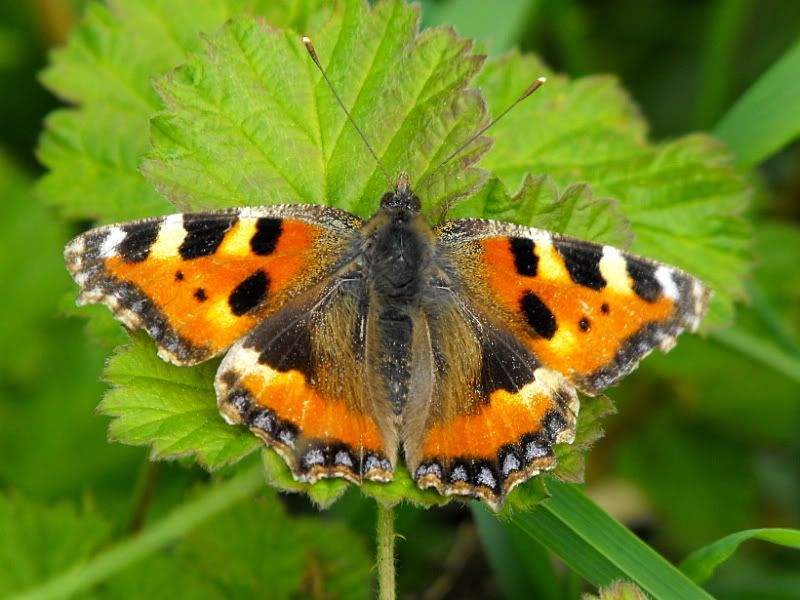
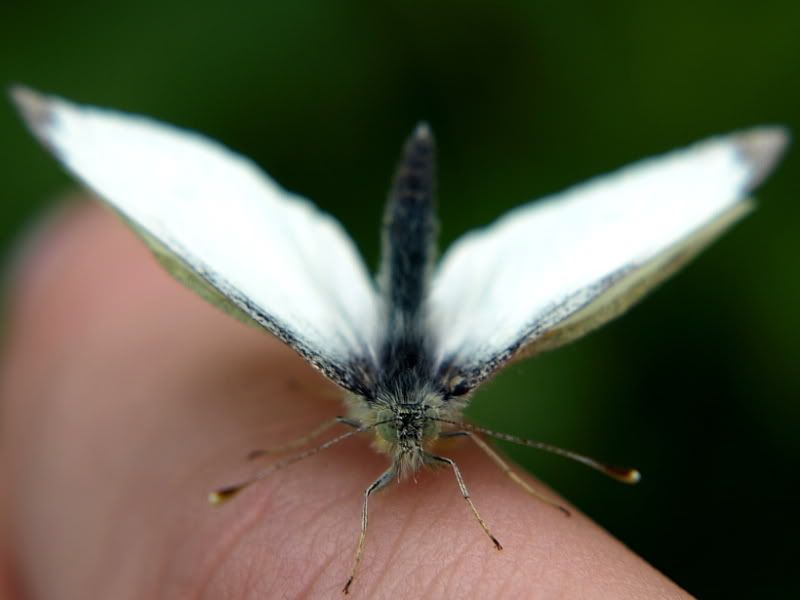
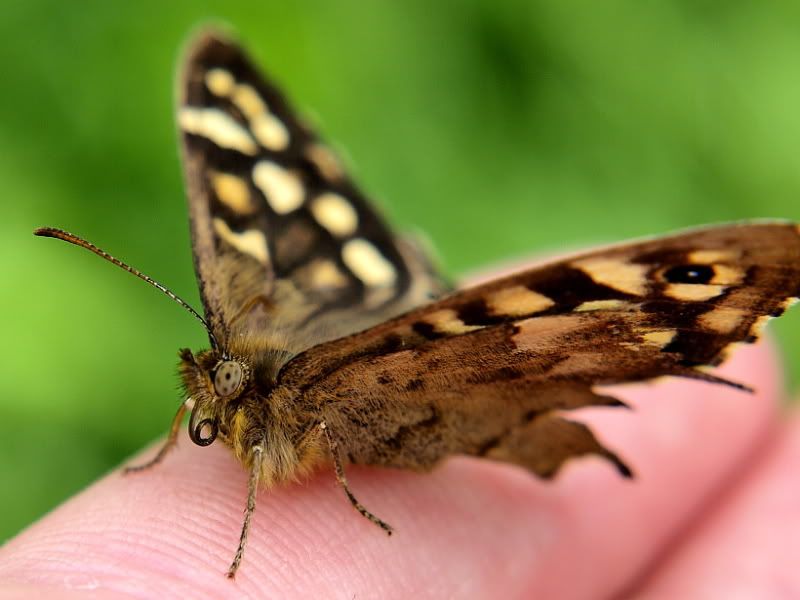 Speckled Wood. Photo courtesy of SJV.
Speckled Wood. Photo courtesy of SJV.We only saw one peacock, and after quite a chase I managed to get this photo:
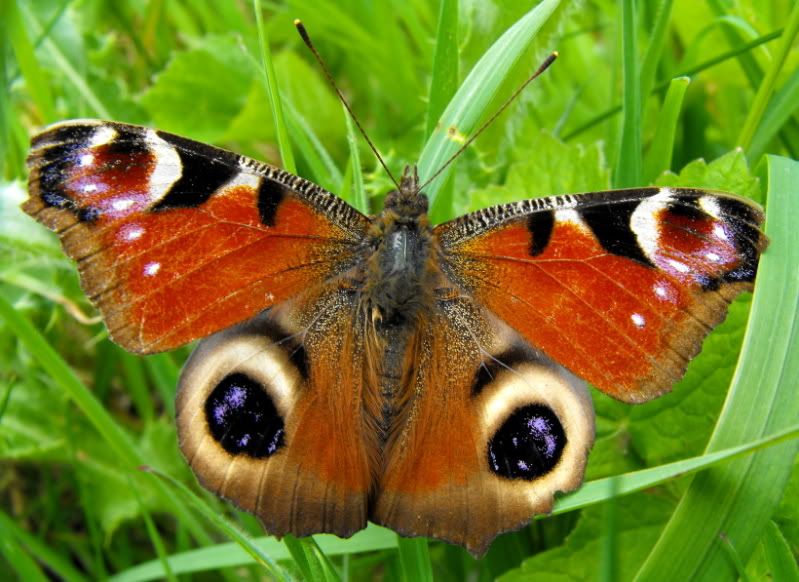
We were surprised to see on our way back a holly blue fluttering around some privet. This is the first holly blue I have seen in Scarborough.
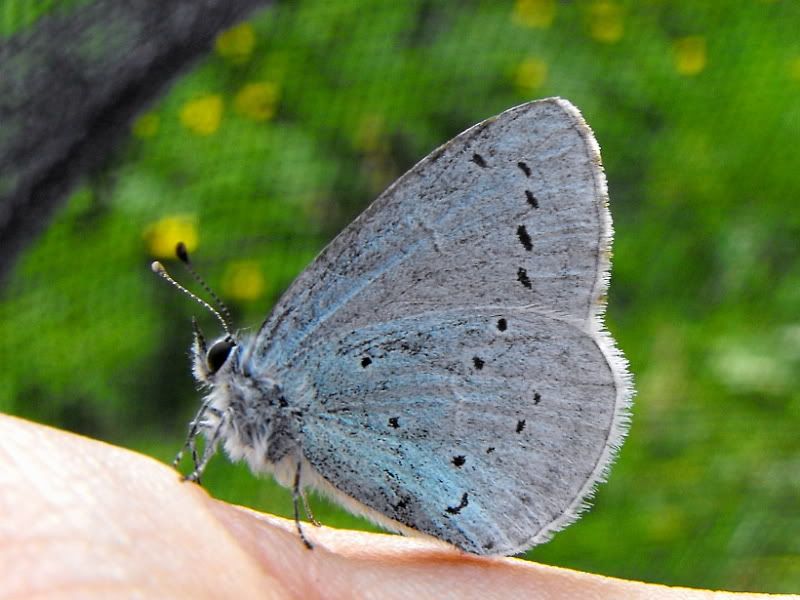
Holly Blue. Photo courtesy of me.
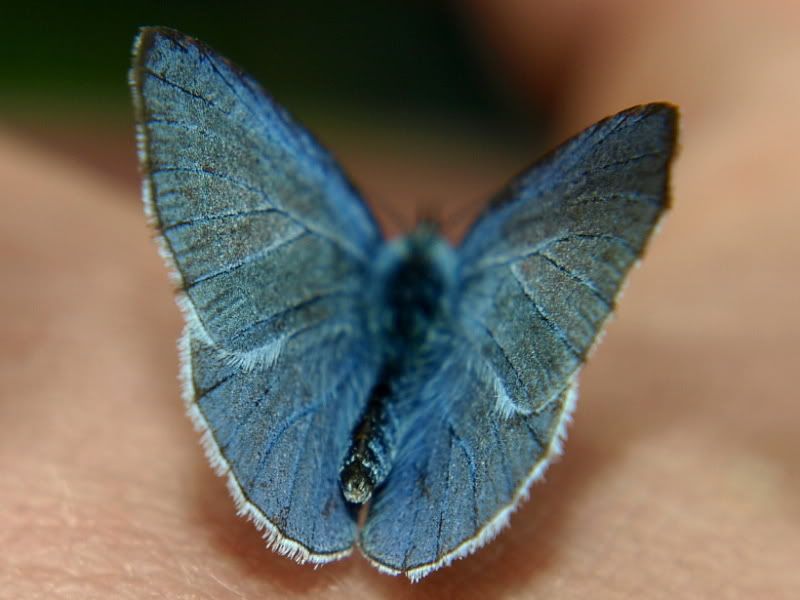
Holly Blue inner wings. Photo courtesy of SJV.
Seeing the holly blue was nice, as it means I have seen ten different species of butterflies so far this year. Strangely I didn't see a single comma today.
Friday 1 May 2009
Convergent Evolution - Example 1
The example I am going to give you today is about the evolution of spines for defense. Obviously the one that springs to mind is the hedgehog.
 West European Hedgehog. Photo courtesy of Wikipedia.
West European Hedgehog. Photo courtesy of Wikipedia.
There are sixteen species of hedgehog which are native to Europe, Asia and Africa, and all of these inherited their spiny defense from a common ancestor. However they are far from the only creatures to have evolved spines.
The Australian equivalent of the hedgehog is the echidna, or to be completely accurate, there are four echidna species all of which are found in New Guinea, and of these, only the short-beaked echidna is found in Australia. Nevertheless, whilst all four of these species will have inherited their spines from a common ancestor, this ancestor is vastly seperate from the common ancestor of the hedgehogs.
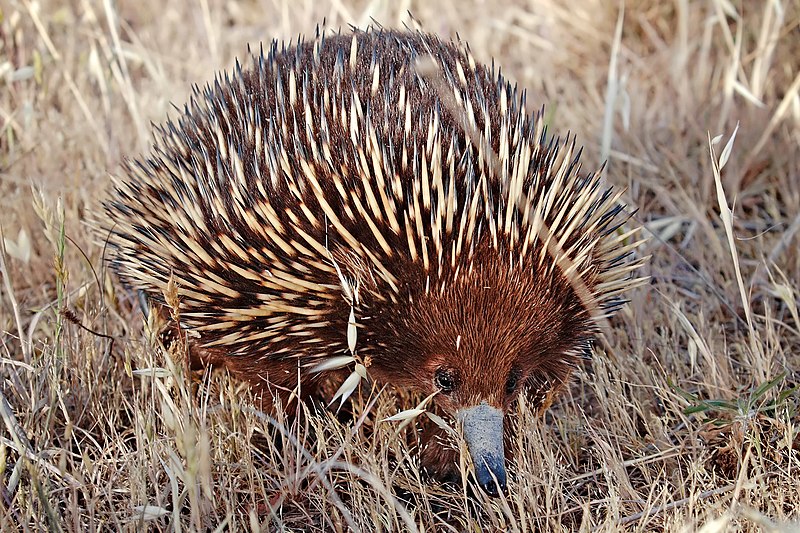
Porcupines also have defensive spines, and are not closely related to the previous two examples. There are eleven old world species of porcupine, and twelve new world species of porcupine. What is fantastically interesting about these two groups of porcupines is that it seems that spines evolved separately in the old world and the new world.
 Old World Porcupine. Photo courtesy of Wikipedia.
Old World Porcupine. Photo courtesy of Wikipedia.
New world porcupine. Photo courtesy of Wikipedia.
The last example I’ll give you are the tenrecs. Tenrecs are mostly confined to Madagascar, and there are two species that have defensive spines, the greater hedgehog tenrec, and the lesser hedgehog tenrec. These two species look just like stretched versions of the more familiar hedgehog.
Unfortunately I can't find any pictures that I can use, so I insist you visit this link:
http://www.americazoo.com/goto/index/mammals/36.htm
So there you have it, five groups of animals that have all independently evolved a similar defense strategy in different places in the world. I’ll hopefully be able give you some more fascinating examples of convergent evolution in future.
Bye now!
Thursday 30 April 2009
Sticklebacks & a newt
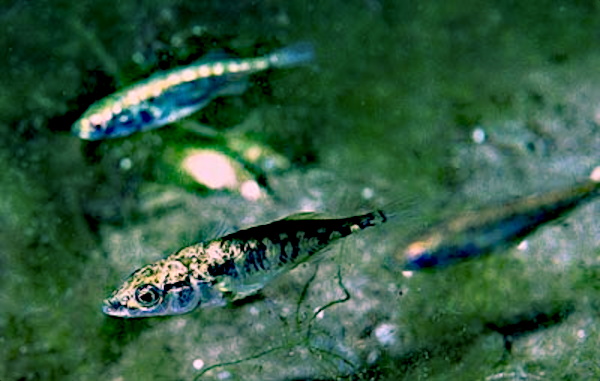
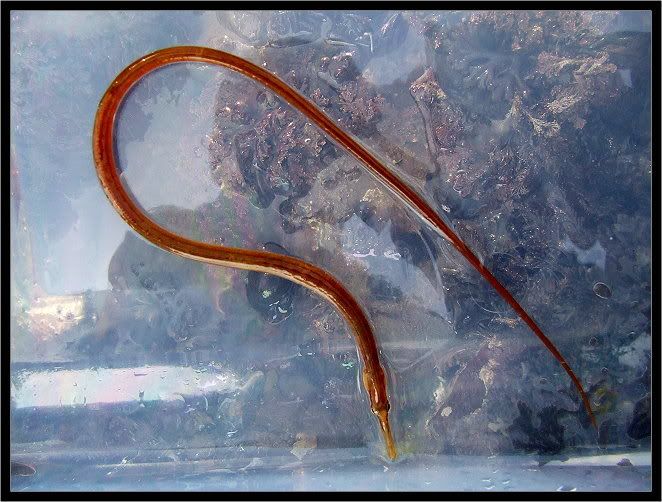 Snake pipefish. Photo courtesy of SJV.
Snake pipefish. Photo courtesy of SJV. Smooth newt. Photo courtesy of Wikipedia
Smooth newt. Photo courtesy of WikipediaWednesday 29 April 2009
Why I Hate Cabbage Whites
Last summer my dad planted, as usual, a couple of rows of cabbage in the garden. For a while all was well, my dad even commented that the butterflies seemed to have left them alone this year. But by the end of summer they were covered in caterpillars as never before. My dad gave me two options, either I could take the caterpillars and rear them, or I could take the caterpillars and feed them to the hens. I chose the former. The caterpillars were of the typical two species that one would find on cabbage, the large white and the small white. Small white caterpillars are nondescript and green. Large white caterpillars, on the other hand, are pale green & yellow, mottled with black patches, and covered with soft bristles. They also have, when they get older, a pair of blue eyes.
 Large White caterpillar. Photo courtesy of Wikipedia.
Large White caterpillar. Photo courtesy of Wikipedia.There were overwhelmingly more large white caterpillars than there were small white, which is reflected in the fact that this year I have released about forty large whites so far, but only two small whites.
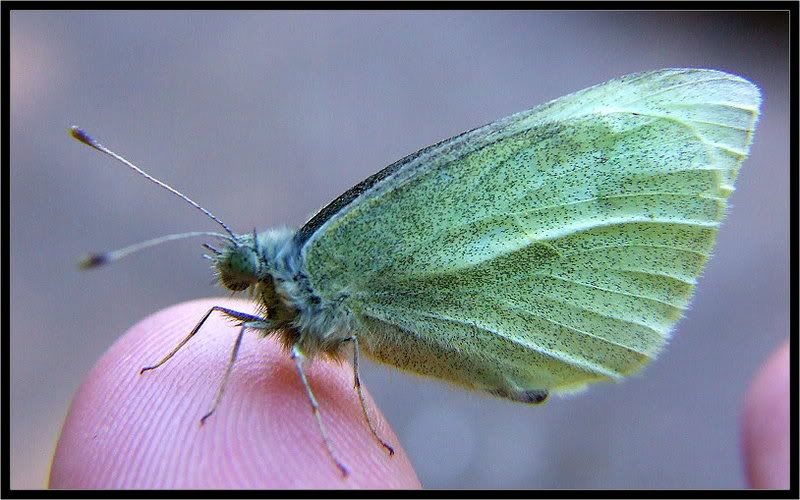 Small White. Photo courtesy of SJV.
Small White. Photo courtesy of SJV.

Whenever I talk to people about the different butterflies I’ve seen, the conversation usually goes along these lines:
[Me] “…. and it turned out to be a painted lady, which is the earliest I’ve ever seen one”
[Other] “Oh really? Well I don’t know that much about butterflies, but I’ve seen a red admiral before, and a cabbage white obviously”
[Me through gritted teeth] “There isn’t actually a type of butterfly called the cabbage white, there are actually four, possibly five…” * muffled sobs *
I don’t know where people get this from, even the most casual perusal of even a general book of garden wildlife will tell you that there is more than one species of butterfly which is lumped under the heading ‘cabbage white’.
In fact I decided to look up ‘cabbage white’ on t’internet and see what I found, and the third website that came up was this:
http://www.bbc.co.uk/nature/wildfacts/factfiles/398.shtml
Now, what you’ll notice is that nowhere on the page does it mention that ‘cabbage white’ isn’t even a type of butterfly, and even more ridiculously, it says that the scientific name of the ‘cabbage white’ is Pieris rapae which is actually the scientific name of the small white. Small whites do indeed feed on cabbage, but as I mentioned earlier, the proportion of large whites vastly outnumbers them. Then, to add insult to injury, the pictures of the caterpillars on the webpage are actually large white caterpillars, and thus a different species to what they said they were talking about.
And that is meant to be the ‘BBC – Science & Nature’ webpage.
So how many different species can be confused under the heading ‘cabbage white’? Well, I’ve already mentioned two of them, small white and large white, but there are others. The next most common species to get lumped in is probably the green-veined white (Pieris napi).
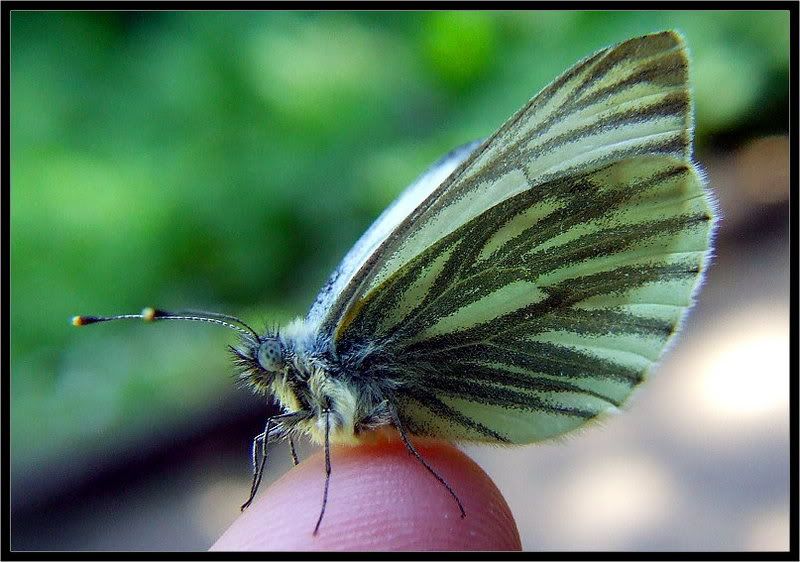 Green-Veined White. Photo courtesy of SJV.
Green-Veined White. Photo courtesy of SJV.Which, whilst distinctive at rest, can be devilishly tricky to tell apart in flight. Another species that can be confused is the orange-tip (Anthocharis cardamines). The males are highly distinctive, and so won’t be confused.
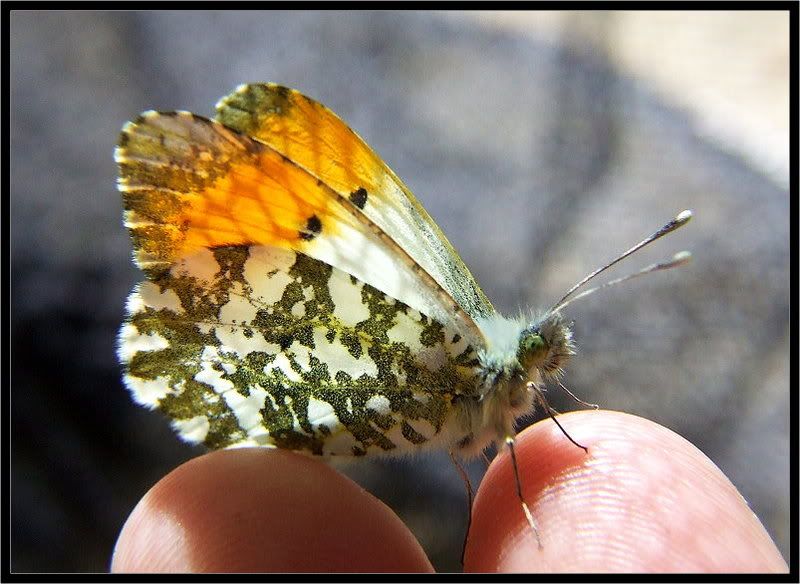 Male Orange-Tip. Photo courtesy of SJV
Male Orange-Tip. Photo courtesy of SJVBut the females, despite the green mottling on the outside of their wings, can once again be difficult to tell apart in flight.
 Female Orange-Tip. Photo courtesy of Wikipedia.
Female Orange-Tip. Photo courtesy of Wikipedia.These are the only species that are likely to be confused around where I live, however, outside of Yorkshire it is also possible that the wood white (Leptidea sinapis), Réal’s wood white (Leptidea reali), and possibly the rare migrant Bath white (Pontia daplidice) could also be lumped under the same heading.
So there you have it, I hate cabbage whites because they don’t exist, and also because there is the possibility that seven different species could be lumped under the same heading.
Also because I’m kind, here is a riddle for you. What does a butterfly, a moth and a fish have in common?
